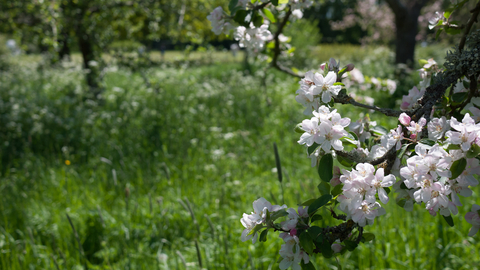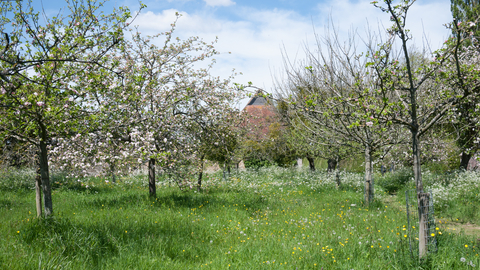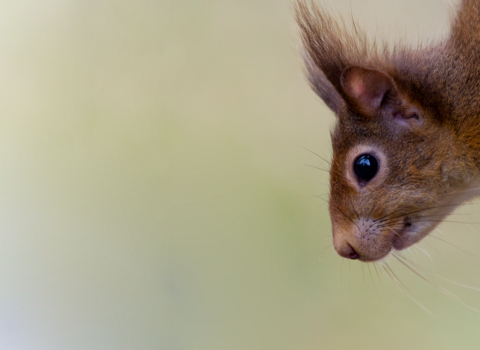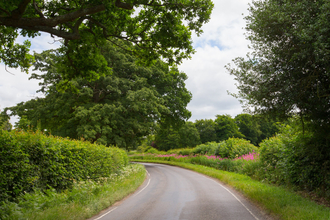


Orchard
What is it?
Traditional orchards, although essentially a crop, can provide remarkable havens for wildlife. While modern orchards are planted with rows of low-growing, closely planted trees and short grassland, trees in traditional orchards were planted at low densities, were grazed with livestock and cut for hay under the wide canopy. Individual trees are long-lived and managed, and the ground layer is lightly used and free of chemicals.
The result is orchard grassland that often includes abundant wildflowers, and trees with veteran features, including rot holes, split bark and hollow trunks – beneficial for fungi and invertebrates – that may be subtly coloured with a range of lichens.
Why is it like this?
Orchards were planted with domestic apple trees and other fruit and nut trees from Roman times onwards, and became a well-established feature of most farms in apple-growing country. The apples and the cider produced formed part of farm-worked wages. The rise of cheap supermarket imports and a drive toward intensification saw the demise of many orchards from the 1950s onwards, but more recently this trend is reversing, with rising appreciation for local apple varieties, and for the social role of orchards as community projects.
Distribution in the UK
There are particular concentrations in Herefordshire, Worcestershire, Gloucestershire, Somerset and Kent.
What to look for
Look for the evergreen mistletoe, particularly during winter when the rest of the orchard is bare. A parasitic plant with much folklore attached to it, mistletoe supports its own invertebrate fauna including the mistletoe marble moth. Birds can include lesser spotted woodpecker, bullfinch, redstart and, in winter, fieldfare and redwing, while night time visits might reveal badgers and hedgehogs. For apple lovers, there are over two thousand different varieties of apple and 500 varieties of pear to spot.
Conservation
Sensitive management includes careful pruning, allowing existing trees to age and planting replacements to ensure continuity.



